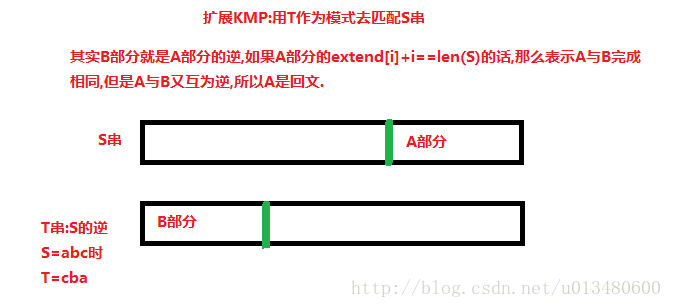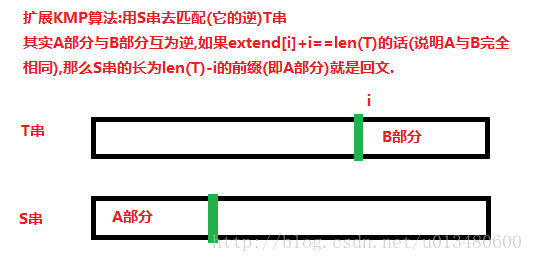Problem Description
After an uphill battle, General Li won a great victory. Now the head of state decide to reward him with honor and treasures for his great exploit.
One of these treasures is a necklace made up of 26 different kinds of gemstones, and the length of the necklace is n. (That is to say: n gemstones are stringed together to constitute this necklace, and each of these gemstones belongs to only one of the 26 kinds.)
In accordance with the classical view, a necklace is valuable if and only if it is a palindrome - the necklace looks the same in either direction. However, the necklace we mentioned above may not a palindrome at the beginning. So the head of state decide to cut the necklace into two part, and then give both of them to General Li.
All gemstones of the same kind has the same value (may be positive or negative because of their quality - some kinds are beautiful while some others may looks just like normal stones). A necklace that is palindrom has value equal to the sum of its gemstones' value. while a necklace that is not palindrom has value zero.
Now the problem is: how to cut the given necklace so that the sum of the two necklaces's value is greatest. Output this value.
One of these treasures is a necklace made up of 26 different kinds of gemstones, and the length of the necklace is n. (That is to say: n gemstones are stringed together to constitute this necklace, and each of these gemstones belongs to only one of the 26 kinds.)
In accordance with the classical view, a necklace is valuable if and only if it is a palindrome - the necklace looks the same in either direction. However, the necklace we mentioned above may not a palindrome at the beginning. So the head of state decide to cut the necklace into two part, and then give both of them to General Li.
All gemstones of the same kind has the same value (may be positive or negative because of their quality - some kinds are beautiful while some others may looks just like normal stones). A necklace that is palindrom has value equal to the sum of its gemstones' value. while a necklace that is not palindrom has value zero.
Now the problem is: how to cut the given necklace so that the sum of the two necklaces's value is greatest. Output this value.
Input
The first line of input is a single integer T (1 ≤ T ≤ 10) - the number of test cases. The description of these test cases follows.
For each test case, the first line is 26 integers: v1, v2, ..., v26 (-100 ≤ vi ≤ 100, 1 ≤ i ≤ 26), represent the value of gemstones of each kind.
The second line of each test case is a string made up of charactor 'a' to 'z'. representing the necklace. Different charactor representing different kinds of gemstones, and the value of 'a' is v1, the value of 'b' is v2, ..., and so on. The length of the string is no more than 500000.
For each test case, the first line is 26 integers: v1, v2, ..., v26 (-100 ≤ vi ≤ 100, 1 ≤ i ≤ 26), represent the value of gemstones of each kind.
The second line of each test case is a string made up of charactor 'a' to 'z'. representing the necklace. Different charactor representing different kinds of gemstones, and the value of 'a' is v1, the value of 'b' is v2, ..., and so on. The length of the string is no more than 500000.
Output
Output a single Integer: the maximum value General Li can get from the necklace.
Sample Input
2
1 1 1 1 1 1 1 1 1 1 1 1 1 1 1 1 1 1 1 1 1 1 1 1 1 1
aba
1 1 1 1 1 1 1 1 1 1 1 1 1 1 1 1 1 1 1 1 1 1 1 1 1 1
acacac
Sample Output
1
6
本来以为kmp可以判断回文 但是遇到 abba next 就不能判断了
应该先验证思路再开始敲代码的 还调试了半天
。。。
参考了大佬的做法:
要用拓展ekmp来求回文串
分析:
首先原始串为S,将S逆转得到串T.(S=abcaaa,那么T=aaacba).
S串的后缀回文:即S串中区间[i,n-1]的串是不是回文?

将S作为主串,T串用扩展KMP算法去匹配S,extend1[n]数组保存匹配结果.如果extend1[i]+i==n时(n为S的长),那么以S[i]为首字符一直到底n-1位置的串是回文串,否则不是.(自己举个例子验证一下)
S串的前缀回文:即S串中区间[0,i-1]的串是不是回文?

将T作为主串,S串用扩展KMP算法去匹配T,extend2[n]数组保存匹配结果.如果extend2[len-i]+len-i==n时(n为S的长),那么以S[i-1]为尾字符一直到0位置的串是回文串,否则不是.(自己举个例子验证一下)
仔细思考下上面的模型.

#include <iostream> #include <string.h> #include <algorithm> #include <stdio.h> #include <math.h> using namespace std; void EKMP(char s[],char t[],int nex[],int extend[])//s为主串,t为模板串 { int i,j,p,L; int lens=strlen(s); int lent=strlen(t); nex[0]=lent; j=0; while(j+1<lent && t[j]==t[j+1])j++; nex[1]=j; int a=1; for(i=2;i<lent;i++) { p=nex[a]+a-1; L=nex[i-a]; if(i+L<p+1)nex[i]=L; else { j=max(0,p-i+1); while(i+j<lent && t[i+j]==t[j])j++; nex[i]=j; a=i; } } j=0; while(j<lens && j<lent && s[j]==t[j])j++; extend[0]=j; a=0; for(i=1;i<lens;i++) { p=extend[a]+a-1; L=nex[i-a]; if(L+i<p+1)extend[i]=L; else { j=max(0,p-i+1); while(i+j<lens && j<lent && s[i+j]==t[j])j++; extend[i]=j; a=i; } } } const int MAXN=500010; char str1[MAXN],str2[MAXN]; int sum[MAXN]; int v[27]; int nex[MAXN]; int extend1[MAXN],extend2[MAXN]; int main() { int T; scanf("%d",&T); while(T--) { for(int i=0;i<26;i++) scanf("%d",&v[i]); scanf("%s",str1); int len=strlen(str1); sum[0]=0; for(int i=0;i<len;i++) { sum[i+1]=sum[i]+v[str1[i]-'a']; str2[i]=str1[len-1-i]; } str2[len]=0; EKMP(str2,str1,nex,extend1); EKMP(str1,str2,nex,extend2); int ans=-10000; //需要保证分成两部分,所以i从1到len-1 for(int i=1;i<len;i++) { int tmp=0; if(i+extend1[i]==len) { tmp+=sum[len-i]; } int pos=len-i; if(pos+extend2[pos]==len) { tmp+=sum[len]-sum[pos]; } if(tmp>ans)ans=tmp; } printf("%d ",ans); } return 0; }
